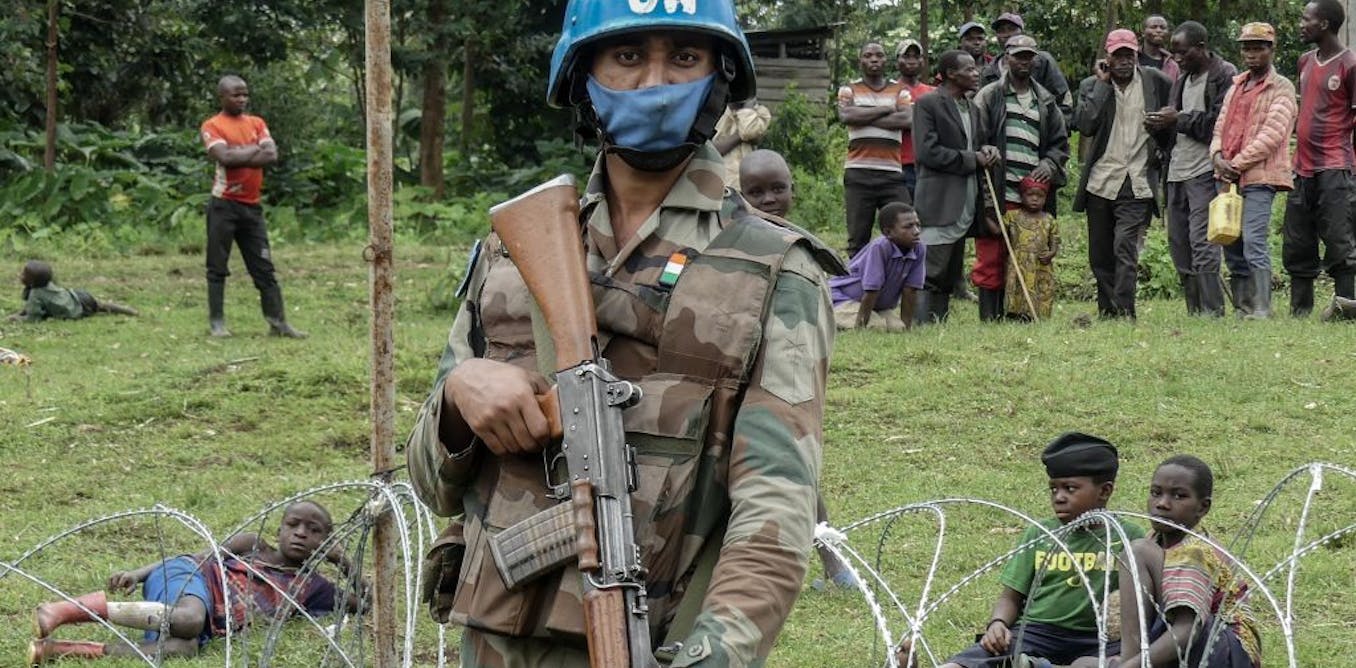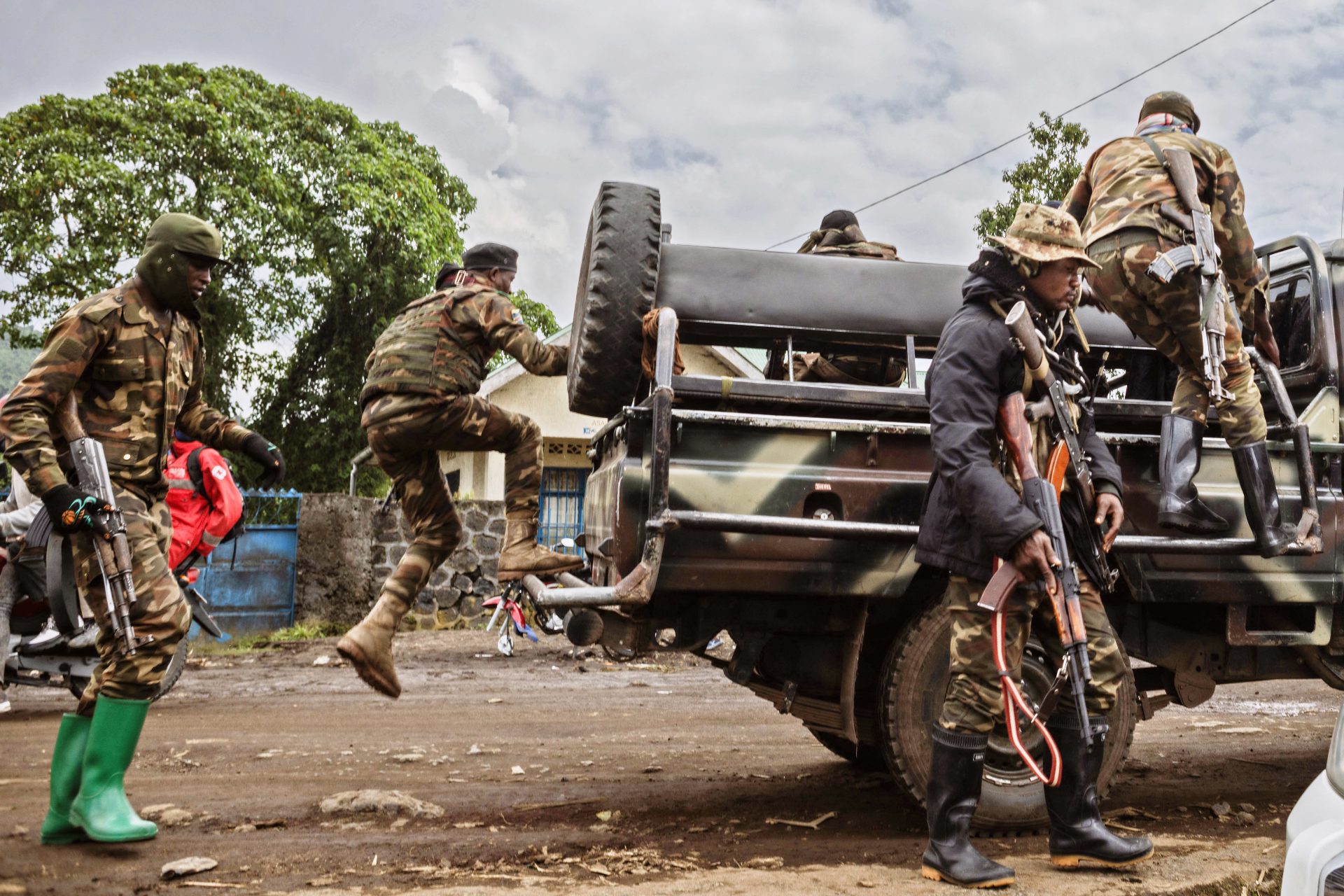Ce briefing est également disponible en français
The past year saw some major changes in the eastern part of the Democratic Republic of the Congo (DRC), which has been ravaged by armed groups for decades. One group in particular rose to the forefront, the Mouvement du 23 Mars (M23). The objectives of M23 are perched at the intersection of local, national and regional power interests as was highlighted among others in the latest report by the UN Group of Experts on the DRC, which details how this rebel group is supported by Rwanda. Tensions between the two countries were exacerbated when Rwanda, on 24 January 2023, shot at a Congolese fighter jet, accusing the Congolese army (Forces Armées de la RDC, or FARDC) of violating its airspace.
After a short introduction on the history of M23, this briefing examines three aspects that illustrate how the movement distinguishes itself from other rebel groups. First, we focus on how the revival of M23 changes alliances on the ground. Secondly, we elaborate on the regional impact of M23. Finally, we examine some peace attempts amid ethnic tensions and their chances of success.
M23 in historical perspective
M23 emerged from the rebel group Congrès national pour la défense du peuple (CNDP), which laid down arms on 23 March 2009, following a peace agreement stipulating that its soldiers would be integrated into the Congolese police and army, while the CNDP’s political wing would become an officially acknowledged party. However, a faction within the CNDP subsequently denounced the poor implementation of the agreement and developed into a new rebel group that came to the fore as M23 in 2012. Besides proclaiming to enforce the terms of the peace agreement, M23 claims to defend the interests of Congolese Tutsi and Kinyarwanda-speaking minorities. In M23’s discourse, the grievances of these minorities revolve around threats by Hutu militias and the state’s ineptitude to protect them. Despite these proclaimed objectives, M23 has perpetrated human rights violations against civilians, including Tutsi, most notoriously when it occupied the provincial capital of Goma, North Kivu in 2012. It took joint military action by the FARDC and the UN to defeat M23, causing combatants to flee to Rwanda and Uganda.
Since its military defeat in 2013, and barring some minor incidents, M23 lay dormant for almost a decade until late 2021 when it ramped up attacks again. In March 2022, violence escalated with the shoot-down of a UN helicopter killing six UN troops. In addition, M23 took control of vast parts of Rutshuru territory. Especially the raid of the Rumangabo military base in May 2022 and the capture of the Bunagana border town in June, were catalysts for M23’s grip on North Kivu. While the former attack provided M23 with access to military-grade weapons, the latter operation increased its revenue base through illegal taxation of the border trade. In late November 2022, M23 also captured the strategic ‘groupements’ of Kibumba and Buhumba, in Rutshuru territory. This allowed them to cut off Route National 2, a major access road to Goma. Consequently, some feared that their control of supplies to Goma was a first step in reconquering the city.
The enemy of my enemy
The first consequence of M23’s revival is that various rival groups concluded a non-aggression pact during an informal meeting in May 2022, in Pinga, North Kivu. These former rivals may have had different reasons for their coalition, but patriotic motives certainly play a role, as many perceive M23 as a foreign proxy. In addition to this rebel coalition, also the FARDC is looking for unusual allies in their fight against M23. For instance, said UN midterm report details how the FARDC supplied weapons and ammunition to, and even engaged in combat with, various non-state armed groups. Advocacy group Human Rights Watch denounced these practices, as they condone and support groups that stand accused of serious human rights violations. Eventually, DRC president Félix Tshisekedi condemned the FARDC and reshuffled the army commanders in North Kivu on 6 July 2022. However, video footage suggests that, still in the autumn of 2022, the FARDC was collaborating with the rebels of the Forces démocratiques de libération du Rwanda (FDLR).
A second example of how M23 is altering the balance of power on the ground, are its own interactions with the East African Community Regional Force (EACRF), which supports the FARDC in fighting armed groups in eastern Congo. Even though it is targeted by the EACRF, M23 seems to take advantage of the latter’s involvement. For example, Lawrence Kanyuka, M23’s political spokesperson, announced in a press release that his movement would surrender the town of Kibumba to the EACRF, which may have been an attempt to increase legitimacy and bargaining power on the regional level. Whatever the case may be, it is remarkable that M23 chose to vacate the town to the EACRF rather than the FARDC. The press release of M23 elaborated on this positive attitude towards the regional armed force: “This is a gesture of goodwill in the name of peace” and “M23 expresses its gratitude to regional leaders for their continued efforts to find a peaceful solution to the ongoing conflict in eastern DRC”.Nevertheless, local actors confirmed that M23 has not left Kibumba after all, which M23 in turn refuted.
M23 at the crossroads of regional rivalries
A second aspect distinguishing M23 from other armed groups, is its impact on the fragile power balance in the African Great Lakes Region. The decades-long rivalry between Uganda, Rwanda and the DRC puts the group at the intersection of national and regional power dynamics.
From a Rwandan perspective, M23’s backing of Congolese Tutsi and its fight with the Rwandese rebel group FDLR, results in some aligned interests. According to President Kagame, dismantling the FDLR is a security priority. This he emphasised as follows in a speech in February 2022: “[…] But when anyone crosses a red line, we don’t ask anybody for permission to intervene. We simply move in and sort the problem out.” It is, therefore, no surprise that the UN midterm report indicated that the Rwandan Defense Force (RDF) is partially responsible for the revival of M23 by supplying both military and operational support, despite Rwanda’s denial. Besides security concerns, observers also point out the importance of political-economic interests. For instance, earlier promises to increase the gold trade from DRC to Rwanda, including plans for refining Congolese gold in Rwanda, and joint military actions are on hold due to the deterring relationship between the two countries.
Meanwhile, rival Uganda got permission to pave 1182 km of roads in North Kivu, which is estimated to significantly increase the border trade between the DRC and Uganda. However, Kagame perceives the road between Rutshuru and Goma as a red line that would upset the Rwandan sphere of influence in North Kivu. This project is also linked to Operation Suhjaa, a military operation to secure the road project and to fight the Allied Democratic Forces (ADF), an Islamist extremist group. Besides roads, regional mining interests also come into play, as Rwanda and Uganda are the main conduits for illegally smuggled gold from their western neighbour. Finally, the multi-billion East Africa Crude Oil Pipeline project at the Ugandan-DRC border, further increases tensions. There is a lot of pressure to get this project running as soon as possible, while many observers dread a Cabo Delgado scenario, where insurgents cause force majeure. This explains why Uganda is eager to fight rebels at home and abroad.
Peace talks amid ethnic tensions
In addition to changing local alliances and exacerbating regional tensions, the rise of M23 is causing growing anti-Tutsi and anti-Kinyarwanda sentiments. In response, president Tshisekedi urged his citizens “not to give in to xenophobic remarks and other speeches of hatred or stigmatisation of Rwandophone communities.” Nevertheless, hate speech, xenophobia and conspiracy theories are rife among leading figures in politics, civil society, and local communities. Traditional and social media amplify these sentiments even further, which results in violence against Tutsi and Rwandophone communities. The situation is compounded by politicians who tap into the grievances of their voters and deliberately fuel these sentiments ahead of national elections later this year. In turn, this ambience of polarisation undermines grassroots support for peace talks and long-term stability.
Still, pacifying eastern Congo was one of the electoral promises of president Tshisekedi. To this end, he declared a state of siege in North Kivu and Ituri in May 2021, and agreed to joint-military actions with neighbouring countries. Despite these measures, the revival of M23 could not be stopped. The East Africa Community tried a different approach by organising several peace talks with Congolese officials, rebel leaders and regional partners to address grievances and negotiate disarmament conditions.
Despite the EAC’s peace-making efforts, several issues hamper lasting peace on the ground. First, M23 was not invited to the Nairobi peace talks, as president Tshisekedi considers them a terrorist organisation and a proxy of Rwanda. Second, both M23 and the FARDC accuse each other of not respecting ceasefires. Third, the abovementioned ethnic tensions exacerbate the violence even further. Finally, it is a short-sighted presumption that stability would return to eastern Congo if only M23 would lay down its weapons.
In any case, military responses in the past have not prevented M23’s resurgence. Hence, a different approach, which focuses on structural reforms, local grievances and restoring dialogue between Tshisekedi and Kagame is needed.
Photo: Congolese fighter jet hit by a missile. Agence de Presse Africaine, January 2023
Further reading




All articles and other news items referenced in this briefing come from third party media sources. Not being the author, IPIS is not responsible for the content of the news items or articles contained or referred to in this briefing.

